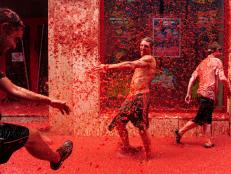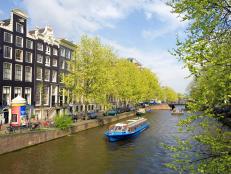The Most Unique Airport Architecture in the World
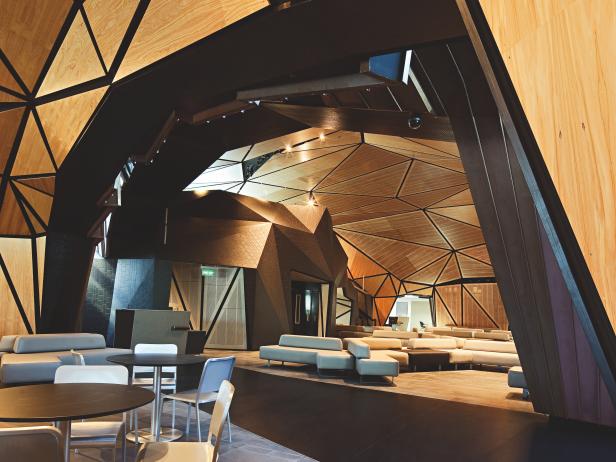
Patrick Reynolds, The Art of the Airport, Frances Lincoln 2016, Translated by Stewart Spencer
For those who use air travel as their main mode of transportation, hanging out in airport terminals is usually a chore and not a pleasure. Think what a different experience it would be if the airport was a dazzling architectural wonder, a work of art that transformed arrivals and departures into something much more than a commonplace routine.
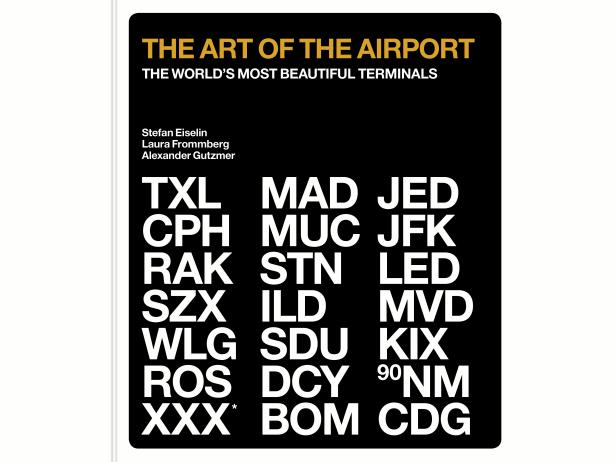
The Art of the Airport, Frances Lincoln 2016, Translated by Stewart Spencer
The Art of the Airport: The World’s Most Beautiful Terminals by Stefan Eiselin, Laura Frommberg and Alexander Gutzmer (Francis Lincoln, publisher) provides stunning evidence that all airports are not created equal: some are designed to be transcendent jet age palaces for the traveler and we have assembled a few examples to demonstrate what architects with a unique vision can achieve.
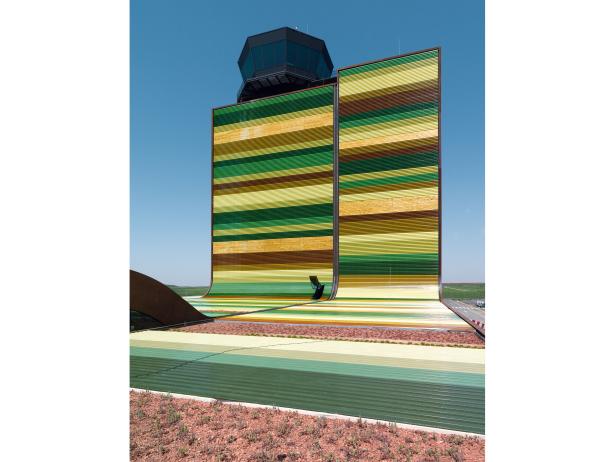
Joan Argeles, The Art of the Airport, Frances Lincoln 2016, Translated by Stewart Spencer
ILD
ILD, the Lleida-Alguaire Airport in Lleida, Spain was conceived during an economic boom in the country but opened in 2010 when Spain was reeling from a major recession. As a result, the airport, designed by Spanish architect Fermin Vazquez, handles considerably less than the original projected capacity of 400,000 passengers. But it is still operational and used mostly by travelers journeying to the nearby Pyrenees for holidays. Green, olive and brown metal plates decorate the terminal’s facade, reflecting the color palate of the surrounding countryside while the design features curving side walls at the base and incorporates a 133 foot control tower.
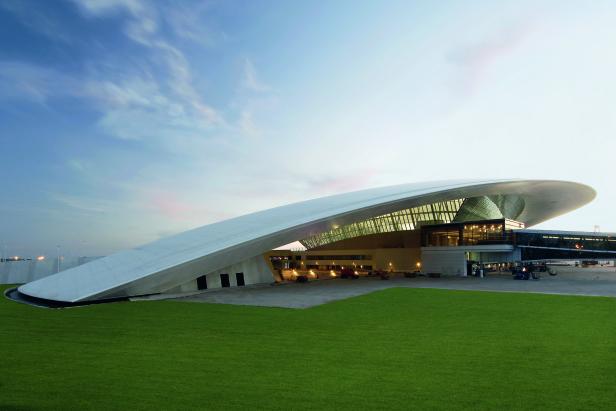
Daniela MacAdden, The Art of the Airport, Frances Lincoln 2016, Translated by Stewart Spencer
MVD
Created by architect Rafael Vinoly in 1947, MVD, the Carrasco International Airport in Montevideo, Uruguay, looks like some extraterrestrial structure emerging from the flat countryside that surrounds it. Vinoly’s concept was inspired by the gently curving sand dunes along the coast of Uruguay. The terminal’s exterior is a white concrete shell with front and side glass walls that allow plenty of natural light to filter through all sides and create a sense of openness.
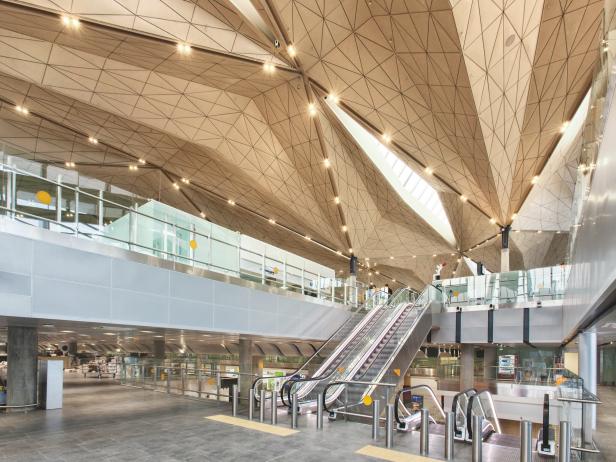
Yuri Molodkovets, The Art of the Airport, Frances Lincoln 2016, Translated by Stewart Spencer
LED
Those who travel to St. Petersburg in Russia and get a glimpse of the city’s skyline before arriving may notice many buildings with bulbous like dome roofs. The designers of LED, Pulkovo Airport in St. Petersburg, wanted to reflect the city’s unique architecture in their terminal by creating an arrival hall distinguished by the inverted roof patterns. The mosaic like metal plates and window patterns similar to churches create an alternative approach to the city’s dome-like architecture that is both modern and a tribute to St. Petersburg’s cultural identity.
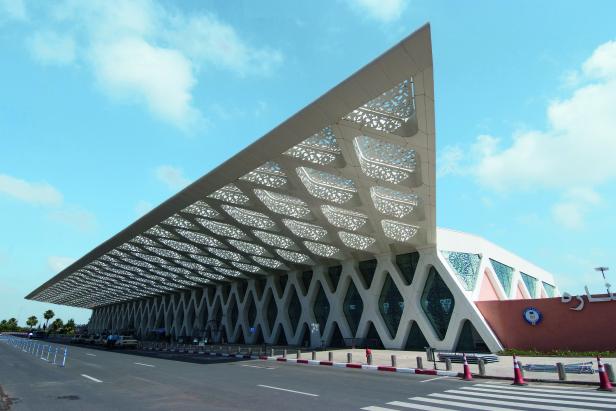
Natalie Tepper, Arcaid Images,The Art of the Airport, Frances Lincoln 2016, Translated by Stewart Spencer
RAK
Another combination of the old and the new is represented by RAK, the Marrakesh Menara Airport in Marrakesh, Morocco. A partnership between E2A of Casablanca and the French firm of CR architecture, the main terminal incorporates design elements from Arab culture in innovative ways such as the Rhombus cutouts in the roof overhang that cast fantastical shadows over the main terminal floor. Large triangular windows adorned with Arabian designs also provide a welcoming taste of Moroccan culture.
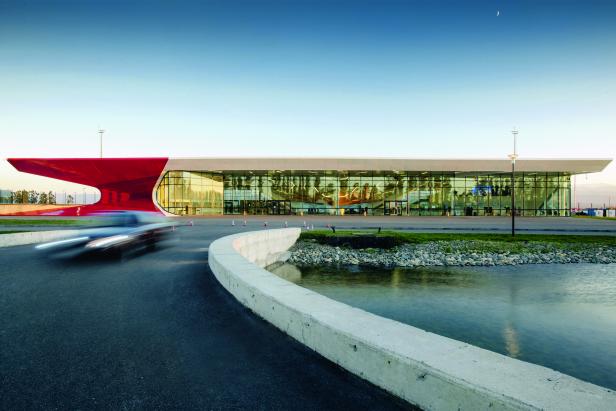
Giorgi Mamasakhlisi, UN Design, The Art of the Airport, Frances Lincoln 2016, Translated by Stewart Spencer
KUT
KUT, Kutaisi International Airport in Kutaisi, Georgia is famous for its passenger friendly design. Created by the Dutch firm of UN Studio, the sleek horizontal terminal has a uniquely transparent layout highlighted by one red corner (the main entrance) and an interior umbrella-like ceiling sculpture that adorns the airport roundabout for passenger flow.

Patrick Reynolds, The Art of the Airport, Frances Lincoln 2016, Translated by Stewart Spencer
WLG
For the country where Peter Jackson filmed his famous Lord of the Rings Trilogy and The Hobbit, you’d expect a different kind of airport experience and you get it at WLG, the Wellington International Airport in Wellington, New Zealand. Inspired the ancient legend of Ngake, a sea monster who created the distinctive sea cliffs of Cook Strait, the architects at Studio Pacific Architecture and Warren & Mahoney revealed a new terminal design in 2010. The copper plate design of the exterior (not pictured) is intended to mirror the wild and rugged look of the famous Cook Strait sea cliffs while the interior exudes a warm, cocoon-like serenity achieved through the handsome woodwork patterns and focused pools of light.
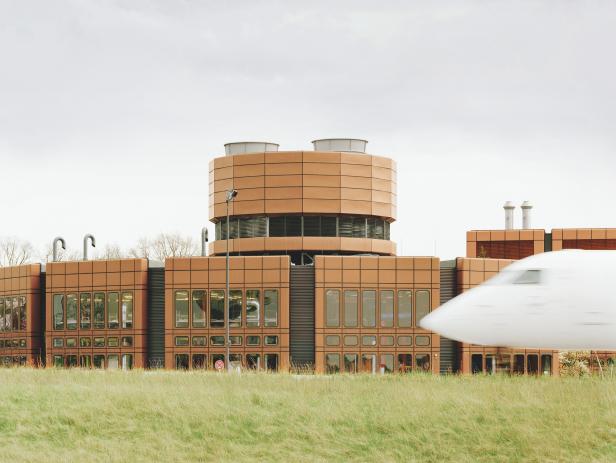
Marcus Bredt, The Art of the Airport, Frances Lincoln 2016, Translated by Stewart Spencer
TXL
Although scheduled to close sometime in 2017 or whenever the new Berlin Branderburg Airport opens, TXL, the Berlin-Tegel Airport in Germany is still operational even though it was originally designed to handle 6 million passengers a year but now receives 20 million annually. Famous for its hexagon-shaped concourse (Terminal A), which was unveiled in 1975 by Reinhard von Gerkan and Volkwin Marg of the Hamburg firm gmp, TXL was considered ultramodern when it first opened and has since become a beloved icon of the city. The rough textured but aesthetically pleasing concrete hexagon was designed for passenger comfort and maximum traffic flow and still achieves that while operating at three times its maximum capacity.
The Air of the Airport, is currently available from bookstores everywhere. For more information, visit Quarto Knows books.





